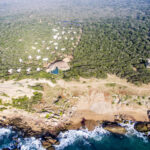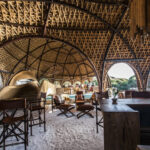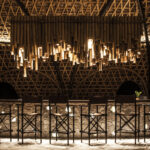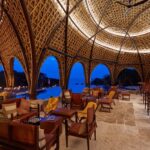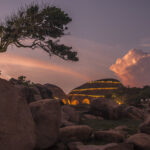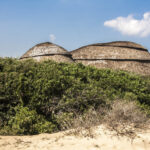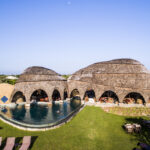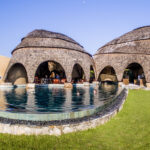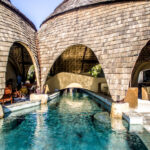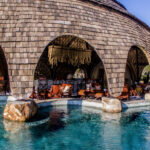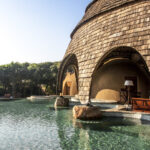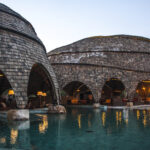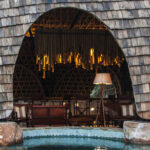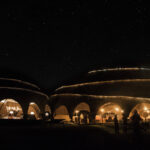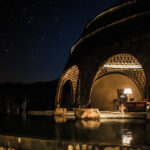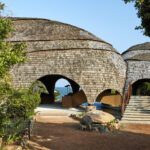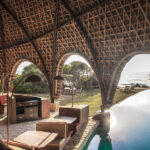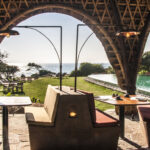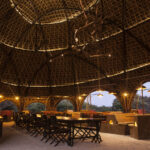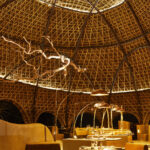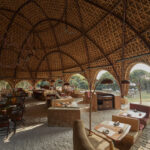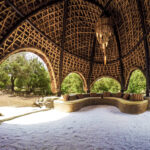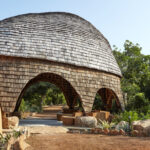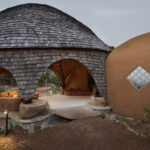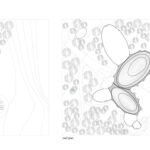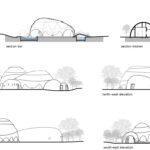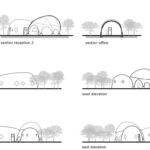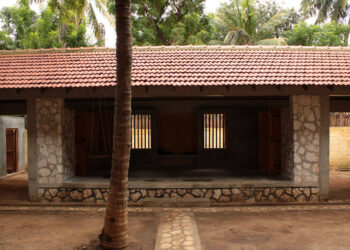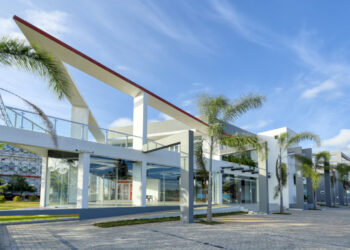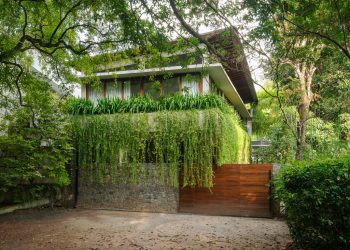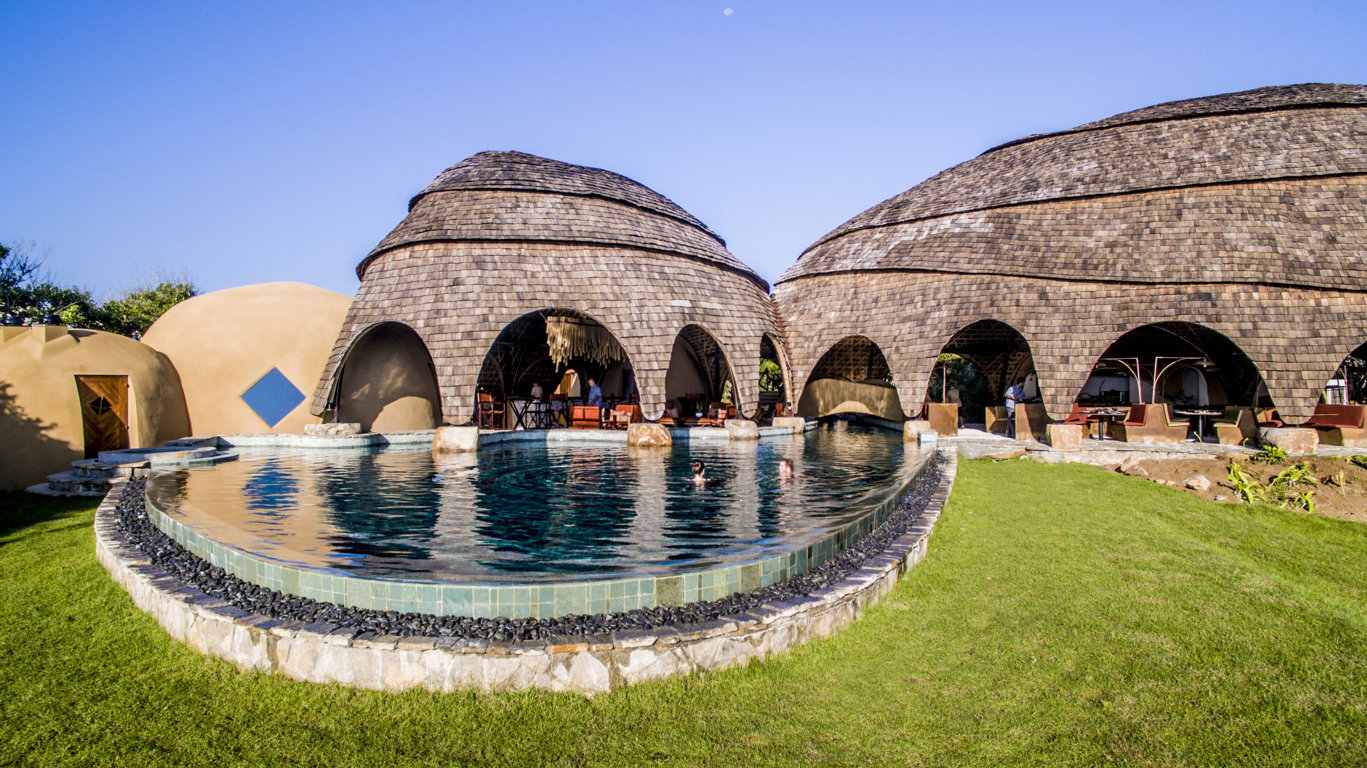
- Architects: Nomadic Resorts
- Design team: Olav Bruin, with Freddie Catlow, Inma Cantero, Oana Tudose & Julian Klaus Trummer
- Location: Yala, Sri Lanka
- Project Year: 2017
- Client: Resplendent Ceylon
- Interior Designers: Bo Reudler Studio
- Interior Design team: Bo Reudler, with Mandy Finke, Oana Tudose, Maddalena Gioglio, Daniela Oliveira, Nele Teerlinck, Larissa Thoin & Martyna Purtak
- Landscape Design: Nomadic Resorts
- Environmental & MEP engineering: XC02 Energy
- Lighting Consultant: Robert Jan Vos
- Bamboo Consultant: Vinc Math
- Contractor: Nomadic Resorts
- Photographer: Marc Hernandez Folguera, Nomadic Resorts & Tim Evan-Cook
Sustainability, landscape and heritage are intertwined in the design of the spectacular Wild Coast Tented Lodge in Yala National Park, Sri Lanka. The safari camp is the first of its kind in Sri Lanka.
Wild Coast Tented Lodge is a 36-tent safari camp located on the edge of Yala National Park, in the south of Sri Lanka. Its organic architecture integrates seamlessly into the site, which comprises dry land forests that merge into the rugged sandy coastline overlooking the Indian Ocean. The five-star eco-resort is designed to give visitors an intimate experience of Yala, celebrating the flora, fauna and culture of the area with minimal intrusion on the landscape. A multidisciplinary team consisting of Nomadic Resorts (architecture and landscape design) and Bo Reudler Studio (interior design) designed the camp for Resplendent Ceylon, a subsidiary of Dilmah Tea, whose unique resorts offer curious travellers diverse experiences linked to Sri Lanka’s history, culture and nature.
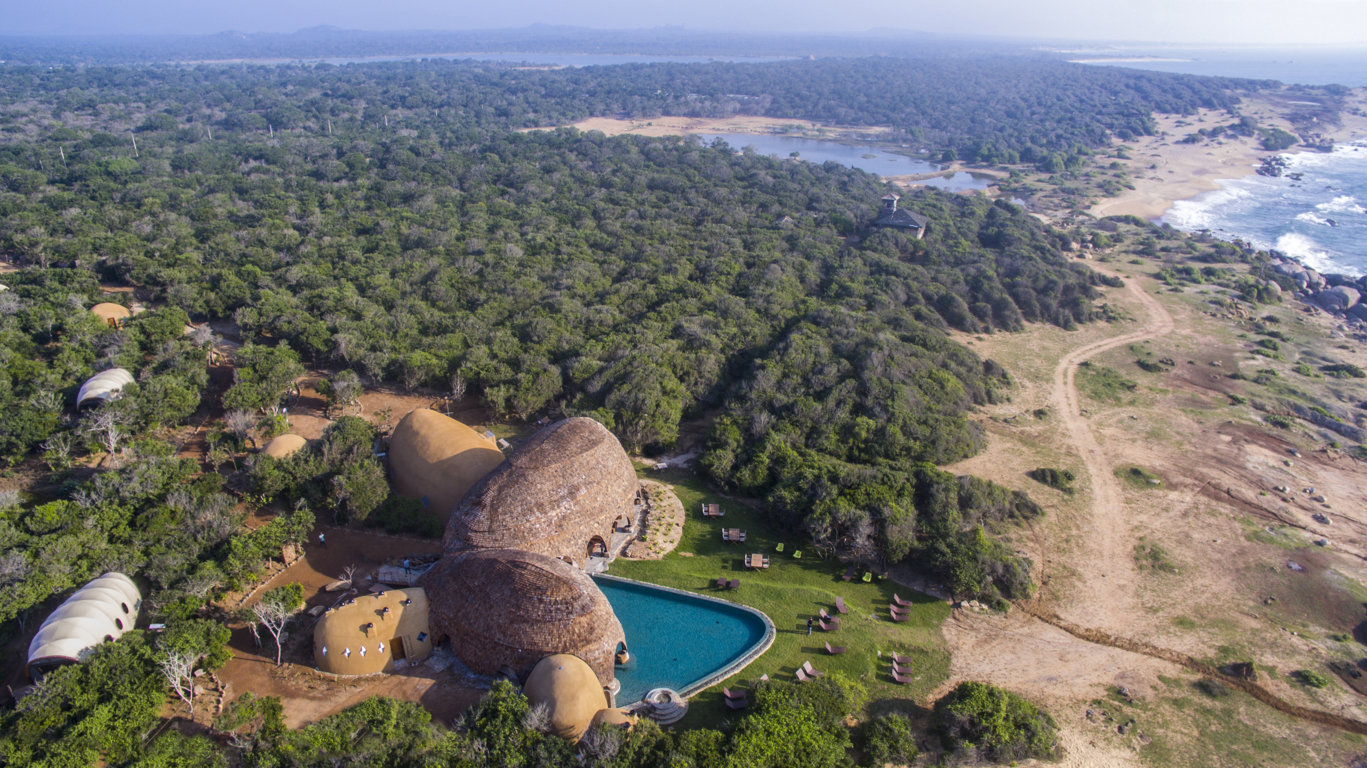
Architecture:
Scattered across Yala’s semi-arid landscape and along the coastline are massive rocky outcrops; these impressive landmarks provide habitat for wildlife and are host to sacred sites. These huge round formations are echoed at a micro scale by termite mounds and suspended beehives found throughout the park. To create a natural fit into Yala’s landscape, the architecture of the camp adopts a human scale between the existing macro and micro forms and derives its forms from these intriguing natural formations. The existing vegetation is retained to ensure an authentic experience of the landscape. Local influences form an integral part of the project, from vernacular traditions and materials to community involvement.

Positioned at either end of the site, the main facilities are organized as outcrops of boulder-like pavilions clustered organically together. Larger open air volumes intersect with smaller enclosed domes that house more private functions. Connecting the welcome area near the entrance with the waterfront bar, restaurant and library is a meandering natural landscape lined with clusters of cocoon-like tensile membrane structures called Loopers. Each cluster, which resembles a leopard paw print, overlooks a watering hole designed to attract wildlife. Guests can admire the wildlife from the safety of elevated decks at the front of their tents. The spa is set back from the beachfront, nestled amid a grove of Palu trees.
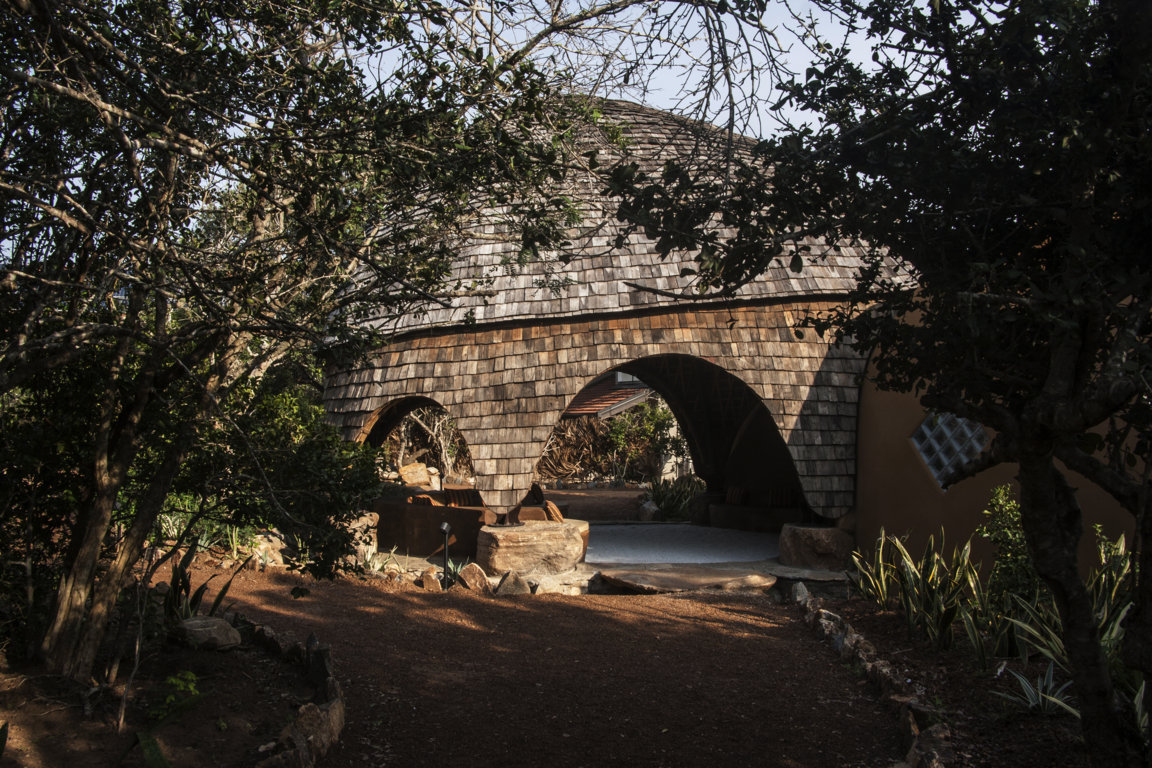
From afar, the large pavilions appear solid but on closer inspection, they’re revealed as light, open structures. Their vaulted construction is crafted from a woven grid shell bamboo structure clad in reclaimed teak shingles. Large, arched openings and high vaulted ceilings create a strong sense of space while concentric ventilation slits help reduce the volumes to a more human scale. As the shingles weather, the buildings will age gracefully over time, and gain a patina that naturally complements the surrounding stone. By night, the illuminated pavilions appear as navigational landmarks – the enclosed structures are lit from the outside, while the open structures are illuminated from within, creating an inviting glow. This effect is accentuated by striking rings of light from LED strips that line the ventilation openings.
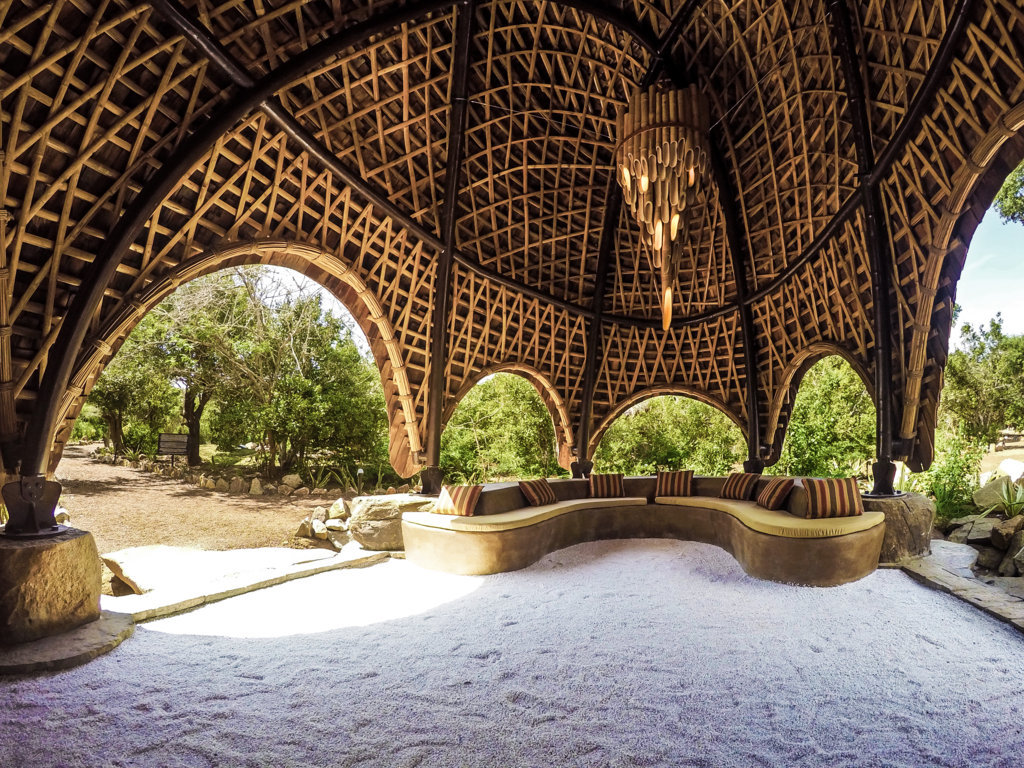
Landscape:
The landscaping cleverly utilizes the qualities of the site, both visually and in terms of the resources. The excavation process for the ponds revealed a subsoil composed mostly of clay and laterite gravel commonly used for road and path surfacing. This gravel is often excavated from river beds, with detrimental environmental effects. The strategy therefore sized the ponds based on the material required for surfacing the pathways. To utilize the excavated material, a special rotating sieve was constructed to separate the gravel from the clay, which in turn, is used to create mud-brick interior features. Rock excavated from the main pool was used to edge the pathways. Dotted through the camp are a series of elegant rock balance sculptures by Adrian Gray created specifically using rocks found on the site. The existing vegetation is complemented by an attractive xeriscape of spiky plants such as Agave, Fucrea and Sanseveria that are able to withstand long drought periods and contrast with the curvilinear forms of the buildings. An additional advantage is that they are unappetizing to the wildlife that roams freely through the site.
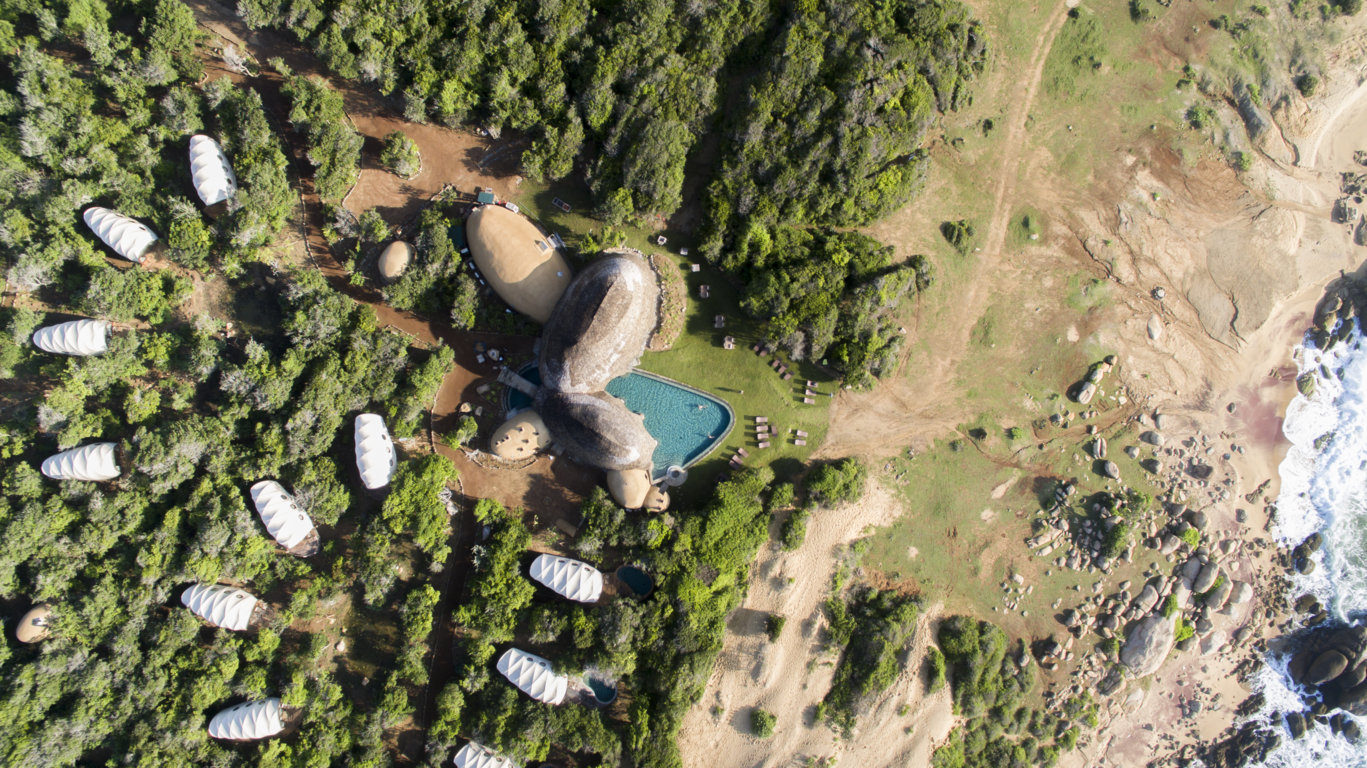
Interior concept:
Whereas the architecture focuses on the outer form of the boulders, the interior recalls the treasures concealed within them such as caves, crystals and veins of precious minerals. Capturing a sense of discovery, adventure and enchantment, the interior combines ecological luxury and local elegance with a contemporary edge. Echoing the context of the site, local materials such as stone, quartz and mud brick are paired with a rich palette of copper, brass, terrazzo, wood, bamboo and textiles. A strong focus is placed on high quality materials that age gracefully. Sculptural light installations punctuate the main spaces.
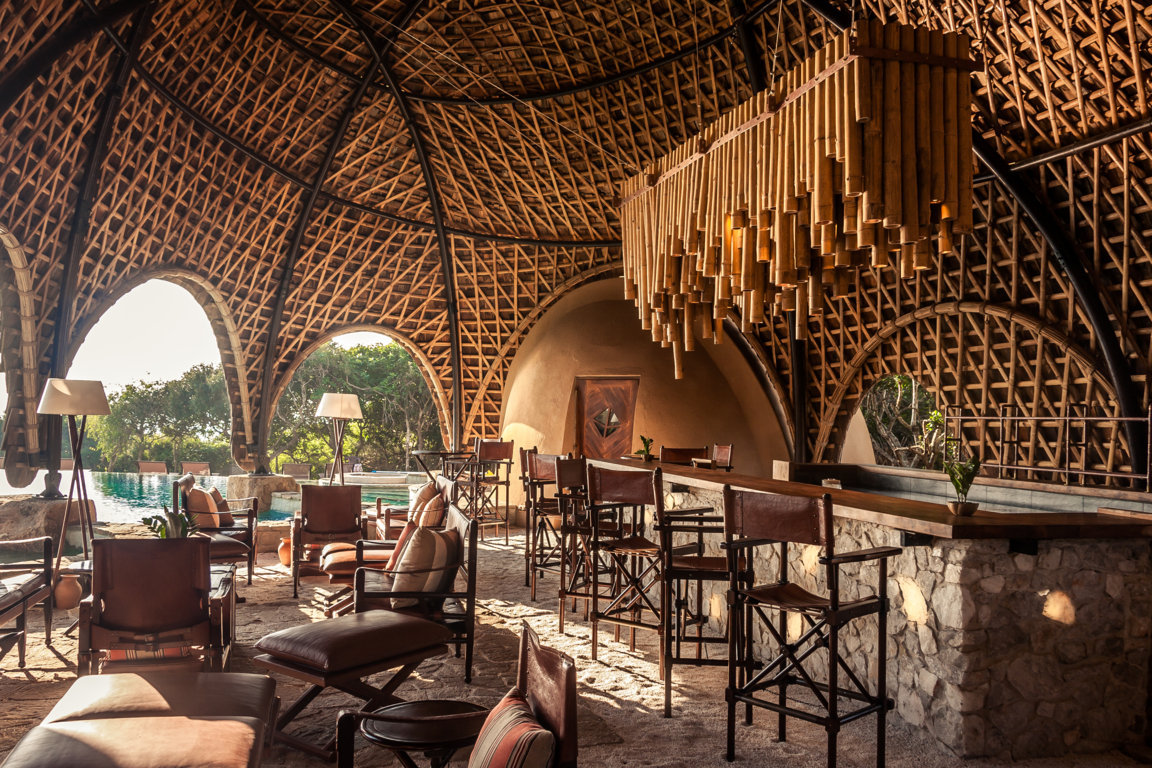
Welcome area: Located near the entrance gate, the welcome area creates a true sense of arrival. An open reception awaits guests after their long journey. The interior centres on a curved mud-brick lounge with an impressive tiered bamboo chandelier above. The arched openings of the bamboo dome of the welcome pavilion intersect with two smaller enclosed ferro-cement domes – containing the offices and washrooms – clad in a rough exterior pebble dash finish. The open end of the office dome incorporates the check-in desk backed by a sparkling quartz wall, creating the impression of looking inside a geode, with its rough stone exterior and crystalline interior.
The restrooms are an unexpected discovery, where a continuous volume of smooth black terrazzo unfolds organically. The darkness of the space has a cradling effect. Bands of white terrazzo along the wall resemble white quartz veins running through dark stone. Shiny copper taps and bathroom accessories contrast against the black background. Compositions of pebble shaped mirrors echo the central design theme.
Positioned on the beachfront, the main area is composed from intersecting boulder-shaped volumes with the open bar and restaurant in the centre. The supportive and more private functions such as the library, kitchen and bathrooms are located at the back in enclosed volumes.
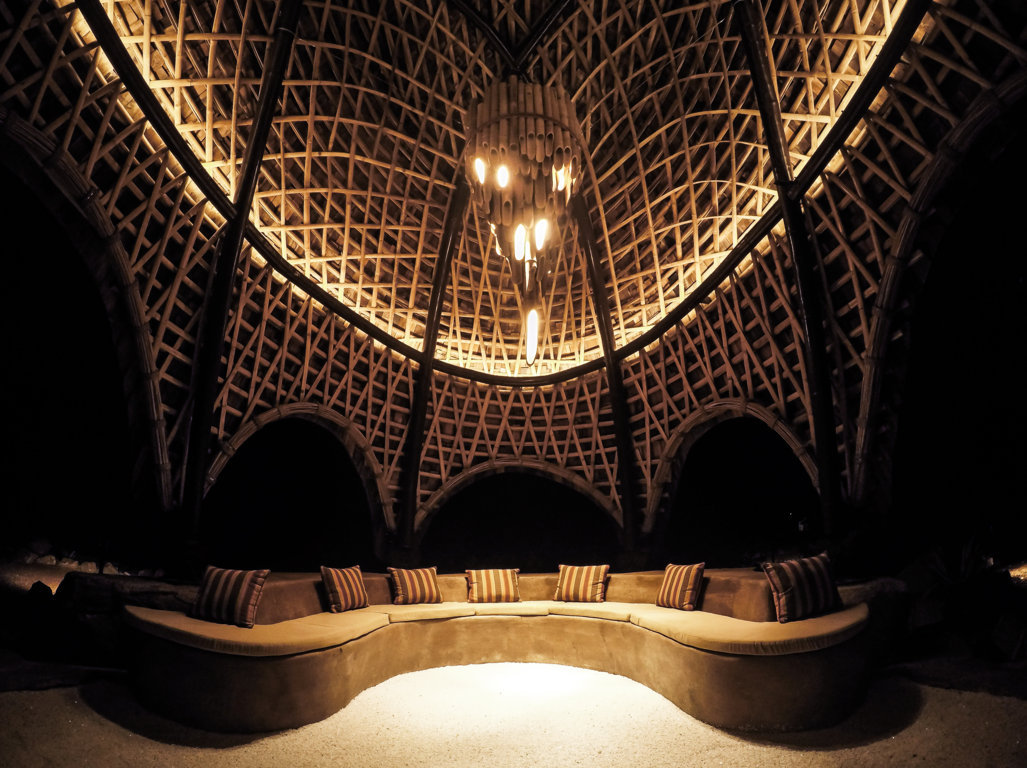
Bar and pool: Designed as a safari living room the Ten Tuskers Bar features portraits of renowned local elephants. The bar counter forms the centerpiece, displaying a sparkling wall of quartz and a bottle rack fashioned from copper pipe. A giant stalactite-inspired bamboo chandelier illuminates the bar surface.
Wrapped around the bar, the pool is a feature element in the main area. It separates the bar from the restaurant, which are connected by an indoor bridge that marks the transition between these two main spaces. Guests can enter the pool from the resort side and swim 40 meters through the building towards the beachfront. The water also provides a natural cooling effect and beautifully reflects sunlight onto the vaulted bamboo ceilings. By night the pool twinkles like the night sky thanks to integrated fiber-optic lights. Drinks can be enjoyed either seated at the bar or, while taking a rest from swimming, from one of the seating niches carved into the sides of the pool between the big boulder footings. Campaign furniture evokes an era of discovery and adventure. Materials used include leather, copper, mahogany, quartz and quartz pebble floors.
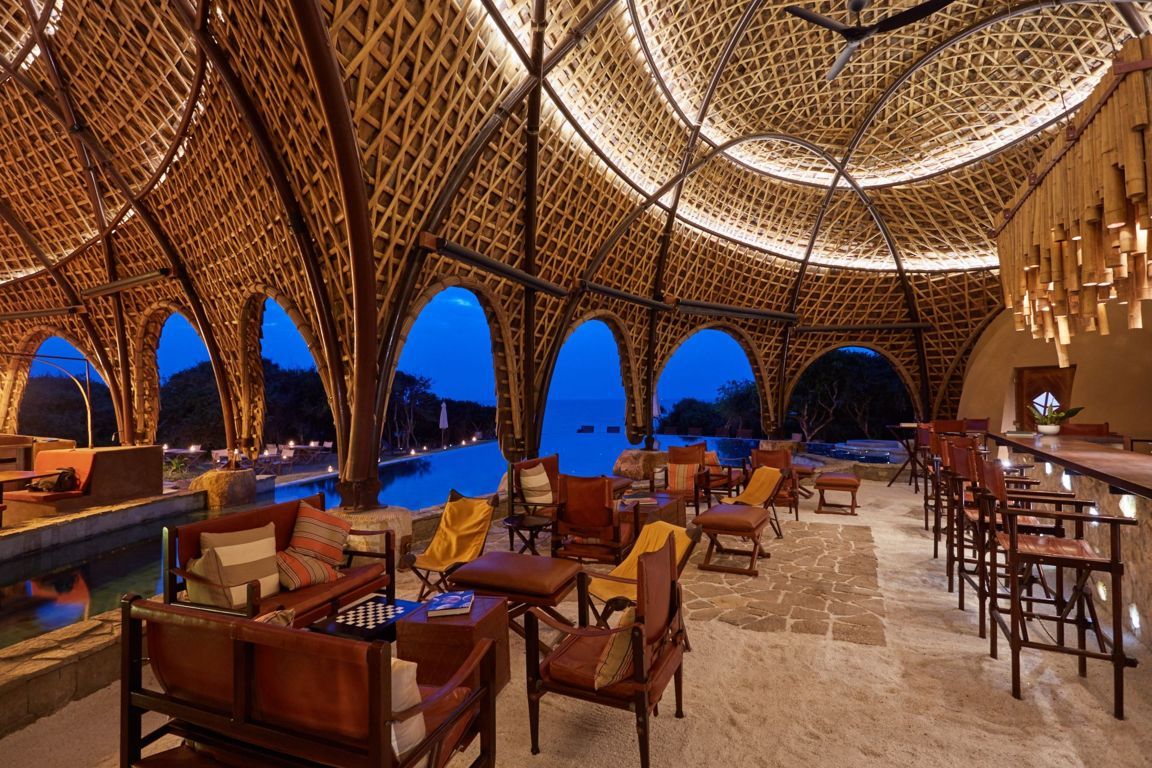
Restaurant: Orientated towards the ocean, the restaurant is the largest pavilion. Inside flows seamlessly with the outside thanks to the generous arched openings, ten-metre-high vaulted ceiling and the movement of the water through the building. The interior focuses on several sculptural elements. Coated mud brick niches incorporate seating and service stations. The carefully considered layout maximizes ocean views for each table. Organically-shaped copper lamps hanging above the tables counterbalance the simplicity and solidity of the mud brick. The glowing copper shades and candle niches in the mud brick lend warmth. White gravel and natural stone floors create a distinct outdoor feel.
Hosting the pre-safari briefing and breakfast, the central table is fashioned from a vertical section of a huge tree trunk. Its origins lie in a 150-year-old Kumbuk tree that unfortunately died at Resplendent Ceylon’s Cape Weligama resort, but gains a new life now in Yala. Suspended in the vaulted ceiling, the visual centerpiece is a seven-metre-long illuminated tree – found on the site – covered entirely in copper leaf. Concentric LED rings on the inside of the dome further accentuate the sculptural quality of the space.

Library: With its eclectic collection of natural specimens and curiosities, the library is a naturalist’s dream. Its enclosed volume intersects with the open bar pavilion. Inside, a central timber display case is surrounded by shelves filled with books, fossils, minerals, shells, globes, scientific equipment, dried plant samples and animals in specimen jars. In this calm, vaulted space, guests can retreat to enjoy a game of backgammon or discover more about the local culture and wildlife.
Sustainability and local craftsmanship: The ambition to minimize environmental impact and the isolated nature of the site demanded a locally-focused, sustainable approach to the entire project. Solar panels on the roofs of the back-of-house spaces produce up to 40% of the camp’s energy needs. Food waste is processed in a gas digester producing biogas for the kitchen and grey water is recycled for watering the gardens. Heat recovery from the air-conditioning units is used for water heating in the Loopers.
Sourced locally as much as possible, natural materials were used in tune with the surrounding environment, celebrating vernacular traditions such as mud brick construction. Excavated stone and locally quarried quartz are used widely throughout, and residue clay from the gravel sieving process was mixed with elephant dung, an abundant resource, to create the restaurant and welcome area mud brick seating. Bamboo is a strong, fastgrowing renewable material and the teak shingles were reclaimed.
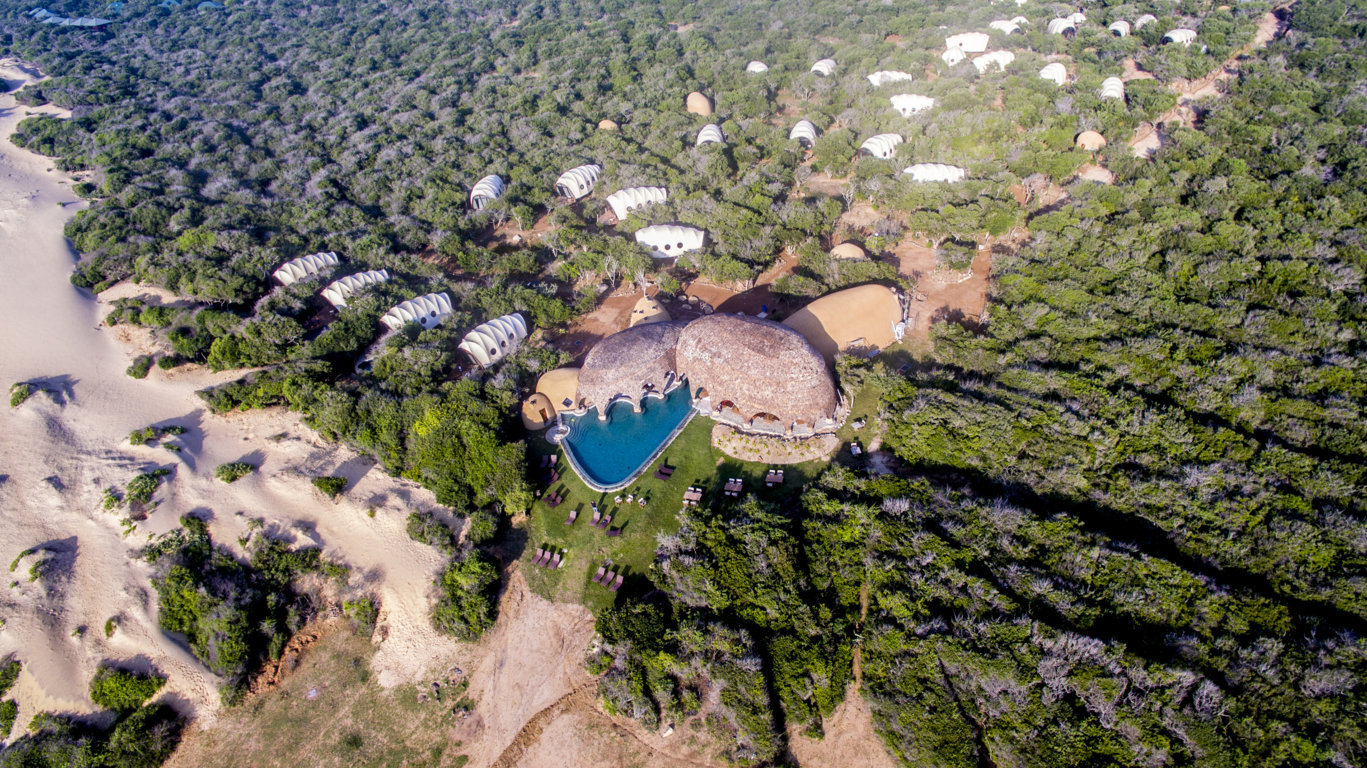
Importantly, the resort was built in close collaboration with the local community. Local fishermen were trained by a group of international consultants to execute the bamboo and tent construction. The boulder footing details of the main pavilions were constructed by a local rock carver who specializes in working with temples, and the interior liners of the Loopers were skillfully laced by fishermen with nimble fingers accustomed to fixing nets.
Text description provided by the architects

